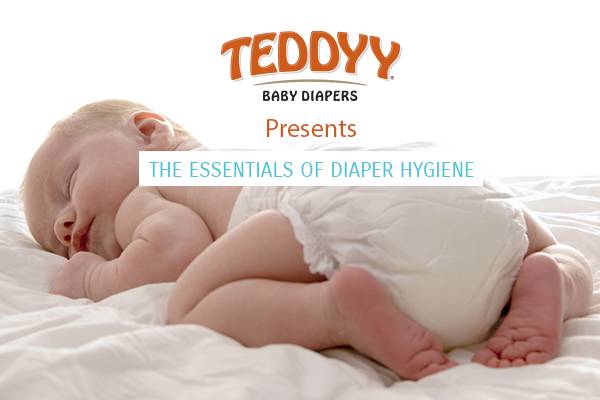
Diaper Hygiene: Things that you took for granted but you shouldn’t!
2 Nov 2015 | 4 min Read
Kartik Mehta
Author | 5 Articles
As a parent in today’s times, it is difficult to imagine life without a diaper. Gone are those days when moms would have to rush to wash the nappy every 15 minutes, leaving herself exhausted at the end of the day.
Diapers are a boon especially when you travel with the child and may not find a child-friendly washroom in several hours, or the child is not toilet trained yet or, the child is unwell to walk up to the washroom. Ease of availability and usage makes it even more attractive! From a health and hygiene point of view though, there are certain precautions and measures that the mother/caregiver must take while using diapers for the baby.
Know when to change diaper
For a new born infant, the frequency of peeing and pooping may be very high, so keep a close watch and change as soon as your baby has pooped. Otherwise, it can stay on for a while but don’t wait until it is fully soiled or gets heavy. It may hurt the newborn’s delicate skin.
An infant might have to be changed every two hours or so while toddlers develop better bladder control and go up to three or four hours without needing a diaper change. If your child has sensitive skin or is prone to urinary infections, then frequent changes may be required.
Also, if you are at home, try keeping your baby off diaper for a few hours atleast, clean the genital area of the baby and leave him in loose pants. To begin with, you may have to rush to clean more often, gradually you will get a sense of when he needs to be taken to the restroom. It is also the first step towards toilet training.
A majority of children are fully potty trained by the time they are three years of age. There can always be exceptions though and quite a few children are off diapers earlier or later than this age.
Sanitise, Clean, Moisturise, Repeat
Wet wipes, a changing mat, a disposable packet and a couple of fresh diapers are some must-haves in your diaper bag!
1. After removing the wet or soiled diaper, clean the area gently with the wet wipes. Make sure that you clean the soiled area well. Use skin-friendly baby wipes or a gentle soap to wash. If washed, dab dry with a clean cloth (do not rub) before putting on the next diaper.
2. If your baby has sensitive skin, apply some lotion or rash cream to the area before putting on a fresh diaper. Soiled diapers need to be removed instantly so that the skin is not in contact with the wet surface too long.
3. If required, excess faeces could be washed off, and then rolled before putting in a garbage bin (a special wad of tape is on the diaper/ or are the frontal tapes so it can be rolled and sealed).
4. Washing your hands before and after a diaper change is a must.
5. Another safe practice is to keep the diaper a bit loose on the baby so that the skin can breathe.
Steer Clear of Diaper Rash (also known as diaper dermatitis):
1. If the genital area of your child looks red, puffy, with fine red spots or tender red bumps, chances are that it’s diaper rash.
2. Note where and what has caused the rash, to make sure you avoid those products. You can also seek your doctor’s opinion in case the rash is extensive.
3. Frequent topical applications of a bland protective barrier agent (zinc oxide paste) may suffice to prevent rash. There are also chances of fungal infections. Antifungal creams should be used on advice of a doctor.
4. If the child is itching or putting his hand near his genitals, clean the area properly, apply a good diaper rash cream and keep him off diaper for a couple of hours.
5. Follow the above mentioned hygiene to prevent rash and it is also good to keep your baby off diaper at least few hours in a day!
Do not stress yourself worrying if you have managed to get rid of all the germs! Studies indicate there is no risk to a baby from his or her own germs.
Also read more about: 7 popular children’s classics to spark the love for reading, 5 Tips For Potty Training, Top 11 Do’s and Don’ts for Infant health care,15 Must-know tips for each trimester for an expecting mother
Disclaimer: this post is sponsored by Teddy Baby Diapers
A


Suggestions offered by doctors on BabyChakra are of advisory nature i.e., for educational and informational purposes only. Content posted on, created for, or compiled by BabyChakra is not intended or designed to replace your doctor's independent judgment about any symptom, condition, or the appropriateness or risks of a procedure or treatment for a given person.
